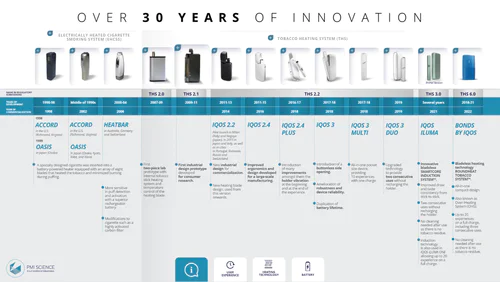How does the OHS work?
The OHS is designed using the principle of heat-not-burn technology. It is made up of four major components:
- The resistive heater
- The control electronics
- The battery
- The housing
The external resistive heater, made of flexible polyimide stainless-steel tracks wrapped around a stainless-steel tube, is enclosed in a shrink tube that provides insulation and structural robustness.
The temperature is monitored using the Temperature Coefficient of Resistance (TCR), which measures the change in electrical resistance of the heater tracks. The TCR control system transfers energy from the battery to the heater based on its resistance, reflecting the heater's average temperature. Control electronics ensure the chamber does not heat the tobacco beyond the maximum target temperature, maintaining the heater at the defined temperature and preventing overheating.
Additionally, the control electronics manage battery charging and the user interface. The battery provides enough power for three consecutive experiences and up to 25 experiences per charge.
